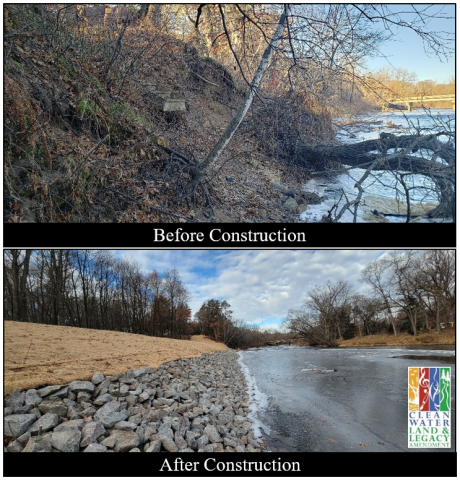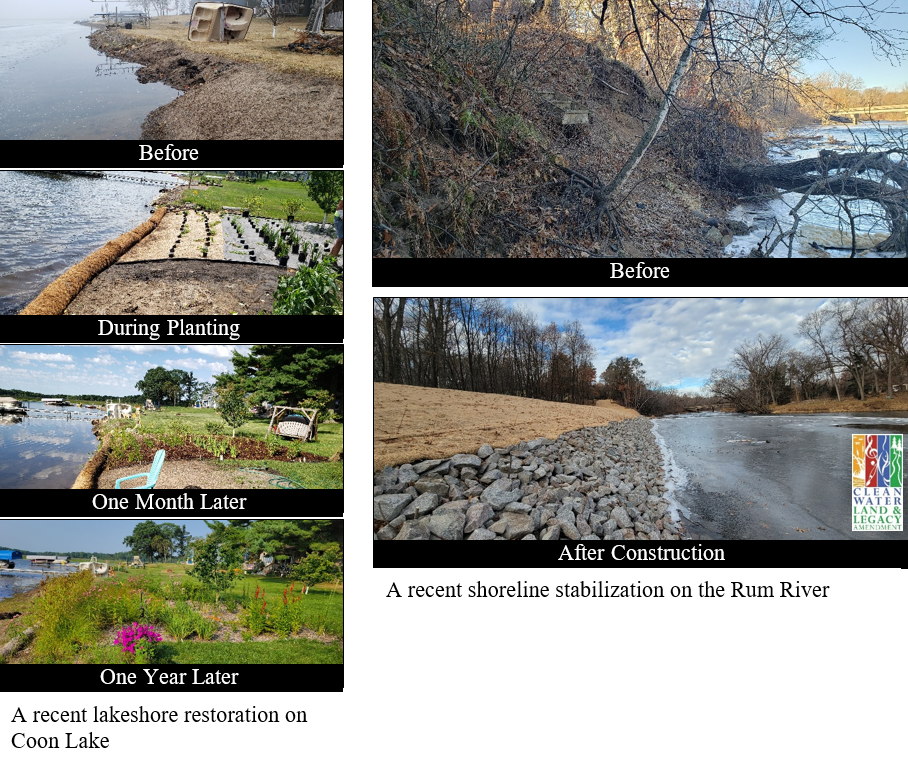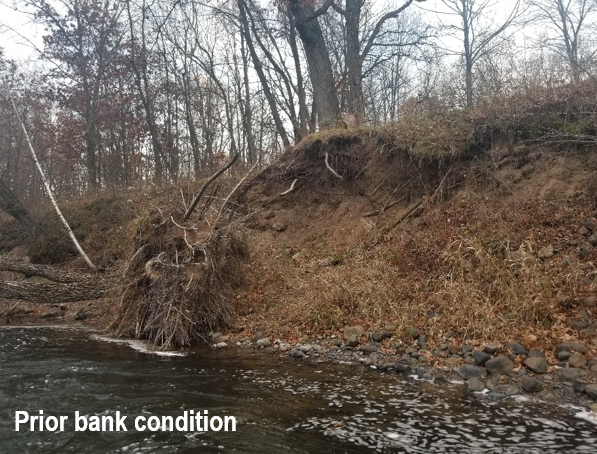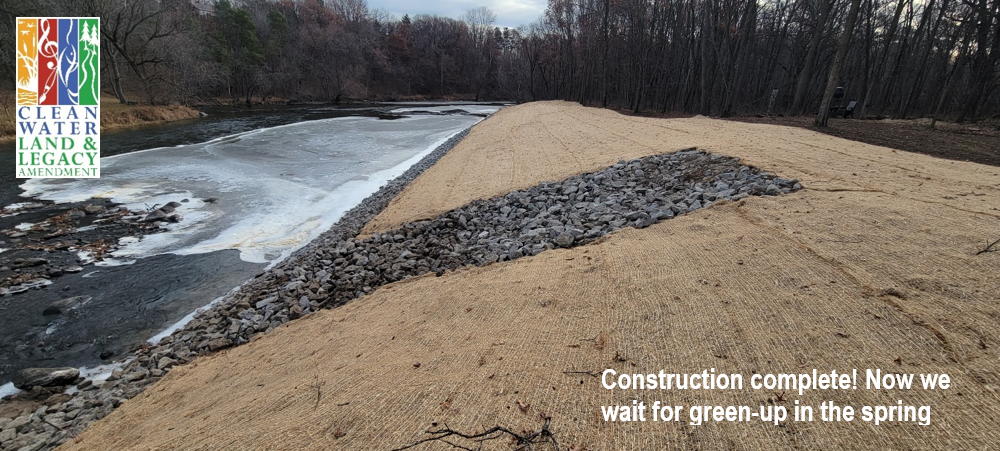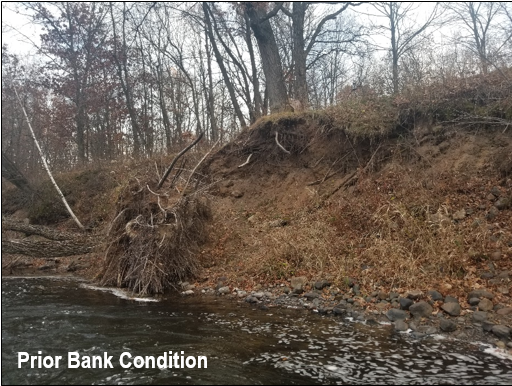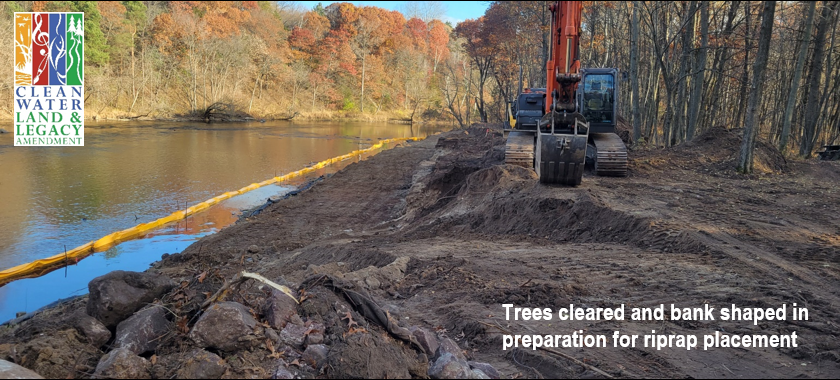Grant funds are available to landowners for addressing shoreline erosion on the Rum River. If your shoreline is falling into the river, migrating back over time, or the bottom has washed out leaving an overhang, these funds can pay for a substantial portion of design and construction of a solution. Funding is available to address erosion issues of all sizes, with landowners typically paying 15-25% of the project cost. Shoreline restoration does more than just protect your property. It also protects the water resource you live on and enhances river habitat!
Those interested can schedule a site visit with Anoka Conservation District (ACD) staff to discuss options and see if your shoreline might fit into one of our various grant programs for financial assistance. Because the design and construction bidding can take months, starting in the spring is recommended. Contact Jared Wagner at ACD at 763-434-2030 x200 or
Rum Riverbank stabilization projects are a partnership of ACD, Anoka County Parks, and the Upper and Lower Rum River Watershed Management Organizations (URRWMO, LRRWMO) with funding from the Clean Water Land and Legacy Amendment.
